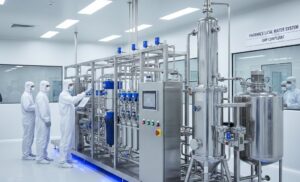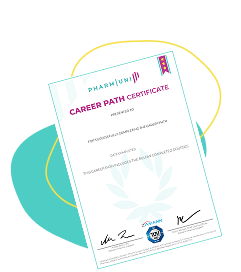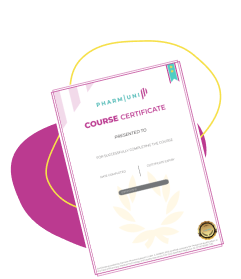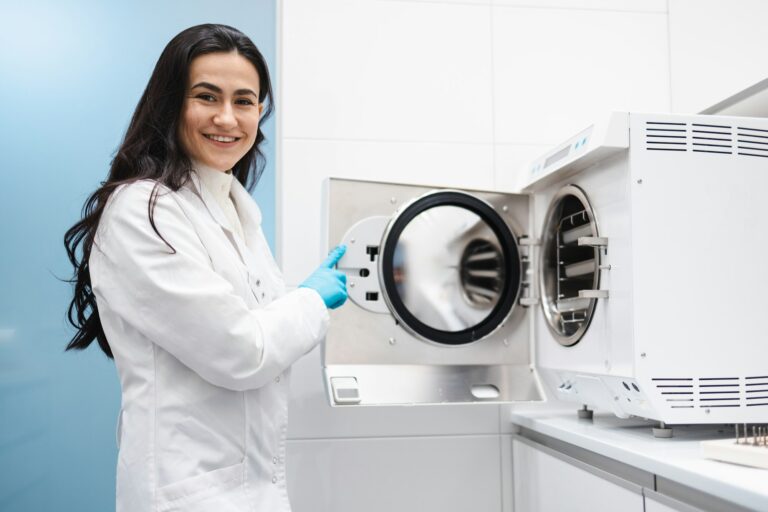Temperature mapping is a fundamental aspect in the world of pharmaceuticals, particularly when it comes to storage. It refers to the process of recording and analyzing the temperature distribution within a storage area, such as a warehouse or refrigerator, to ensure the conditions are suitable for storing pharmaceutical products. It checks for any potential ‘hot’ or ‘cold’ spots that could adversely affect the quality of the goods stored.
Temperature monitoring systems record temperature at one point, usually the storage area center. Temperature Mapping uses multiple sensors at strategic points to provide a detailed profile.
This process affects temperature distribution in warehouses. Factors like doors, HVAC systems, and refrigeration units can impact results. Without mapping, variations go unnoticed, causing quality issues.
Temperature Mapping is crucial for those who store, transport, or manage pharmaceuticals. It ensures product efficacy, safety, and compliance. By implementing mapping, products are stored under optimal conditions, guaranteeing quality and safety.

2. Understanding the Importance of Temperature Mapping
Temperature mapping is crucial in pharmaceutical storage and warehouses, ensuring optimal conditions for quality and safety. Storage professionals identify temperature variations, taking action to correct hot and cold spots, preventing product degradation.
Temperature mapping also provides data-driven proof of compliance to regulatory bodies. This includes meeting specific storage requirements, such as temperature and humidity. Conducting regular temperature mapping ensures an accurate record of environmental conditions.
Effective temperature mapping demonstrates compliance with GMP regulations. Without it, pharmaceutical products may be exposed to unsuitable conditions, compromising stability and effectiveness. This could lead to financial losses and public health risks.
As a result, understanding and implementing accurate temperature mapping procedures is vital in pharmaceutical storage. It ensures product quality, safety, and compliance with regulations.
2.1. Ensuring Drug Safety and Quality
Pharmaceutical companies actively maintain drug safety and quality through temperature control. Temperature variations impact product efficacy, posing serious health risks, especially for vaccines.
Temperature monitoring identifies “hot” or “cold” spots in storage areas, where temperatures deviate from ideal ranges. We take steps to correct these issues, ensuring product quality.
Regular Temperature monitoring is essential to ensure sustained drug safety and quality. This process accounts for environmental changes or storage layout modifications that affect temperature uniformity.
Temperature mapping ensures drug safety and quality by handling temperature-sensitive products. It assures these products are stored within the correct temperature range, reducing product loss due to temperature fluctuations.
While Temperature monitoring requires resources, its impact on drug safety and quality is significant. It provides a clear understanding of the storage environment, enabling strategies to manage temperature variations and ensure product efficacy and safety.
2.2. Regulatory Compliance
Pharmaceutical companies take regulatory compliance seriously, and temperature mapping is crucial in achieving it. Regulatory bodies like the FDA, WHO, and EU set strict guidelines for storing pharmaceuticals. These guidelines specify storage conditions, including temperature ranges. Any deviations from these ranges can lead to non-compliance, resulting in fines, recalls, or shutdowns.
To prove compliance, pharmaceutical companies conduct temperature mapping. This reliable process identifies hot and cold spots within storage areas. Data is collected and analyzed to ensure storage conditions meet regulatory guidelines. Therefore, mastering temperature mapping ensures product safety, efficacy, and documentary evidence of compliance.
3. The Process of Temperature Mapping
The process of temperature mapping is a systematic approach that ensures a consistent temperature throughout a storage facility or warehouse, particularly for pharmaceutical products. It involves several stages, each of which plays a vital role in obtaining accurate results. The first step in this process is planning and preparation. It involves gathering necessary information about the storage facility, which includes understanding the layout and identifying potential areas where temperature variations may occur.
In the planning phase, decisions about the type of temperature monitoring devices to use are made. The choice of equipment is crucial as it directly impacts the accuracy of the results. It is also during this stage that a mapping grid is developed. The grid layout helps in identifying where to place the temperature sensors throughout the warehouse, ensuring every area is covered.
The next step involves the actual conduct of the temperature mapping. This stage involves placing the temperature sensors at the predetermined points on the mapping grid. The sensors then begin to record the temperature at these points over a specified period. This duration is dependent on the type of products stored and the operational dynamics of the facility.
Step 1: Planning and Preparation
The first step to mastering temperature mapping in pharmaceutical storage is planning and preparation. It is here the groundwork for the entire process is laid out. This involves gathering all the necessary information about the storage facility, including its size, design, type of storage equipment used, and the nature of the pharmaceutical products stored. Different types of products may require different storage conditions, and as such, understanding the product specifications is vital to ensuring a successful temperature mapping.
Once all the necessary data has been collected, a detailed temperature mapping plan can be formulated. This plan should outline the objectives of the temperature mapping exercise, the methodology to be used, and the equipment required. It should also identify potential problem areas, such as places where temperature variations are likely to occur. A well-laid-out plan will serve as the blueprint for the entire temperature mapping process and is key to ensuring its success. Thus, time and effort invested in the planning and preparation stage can significantly influence the outcome of the temperature mapping exercise.
Step 2: Conducting the Temperature Mapping
In the second phase of temperature mapping, the focus shifts to the actual execution – conducting the temperature mapping. The monitoring devices, correctly selected and placed as per the mapping grid in the first step, are now set to perform their task. It’s essential at this stage to ensure that the devices are appropriately installed, with no obstructions that may affect the readings. A successful execution of this step would lead to accurate data collection, representing the true conditions of the storage or warehouse environment.
This stage should not be rushed, as it is critical to gather data over a sufficient period to understand the environmental variations in the storage facility over time. The process might span across different seasons to account for changes in external weather conditions and their impact on the internal storage conditions. Data should be collected continuously, ensuring a comprehensive set of data points that will later contribute to a thorough analysis. The success of the temperature mapping exercise largely rests on the meticulous execution of this step.
Step 3: Data Analysis
Once the temperature checking test has been completed, the critical process of data analysis begins. It’s important to gather all the data from the temperature sensors and start examining the recorded temperatures. The data should be assessed to determine whether it falls within the prescribed range for the storage of pharmaceutical products. Any deviations from this range could have serious implications for the safety and efficacy of the stored drugs.
The data analysis should include a thorough examination of all the temperature readings collected during the mapping process. This will help identify any hot or cold spots within the warehouse. These are areas that consistently register temperatures outside the acceptable range. Identifying these areas is crucial as it allows for necessary corrective actions to be taken to ensure a uniformly suitable environment for drug storage.
The data analysis should also include a review of the performance of the storage area under different conditions. These conditions may include variations in external temperature, load changes in the warehouse, and fluctuations during the typical operating cycle of the HVAC system. This helps in understanding how different factors can affect the temperature uniformity in the warehouse.
4. Common Challenges in Temperature Mapping and How to Overcome Them
One of the key challenges in temperature measuring in pharmaceutical storage is dealing with the size and complexity of the warehouse. Large warehouses with many racks and shelves can make it difficult to place sensors in all necessary locations. This might result in missed hot or cold spots, leading to inaccurate temperature mapping. To overcome this, it’s advisable to develop a detailed mapping plan considering all areas of the warehouse including corners, near doors, windows, and HVAC vents. Furthermore, the use of appropriate software can aid in managing the complexity of the data collected.
Another challenge is ensuring that the temperature sensors used are accurate and reliable. In some cases, equipment may become less accurate over time or may not be suitable for the range of temperatures in the warehouse. This can lead to inaccurate results and potential non-compliance with regulatory standards. Regular calibration of sensors and using equipment that can withstand the range of temperatures in the storage area can help mitigate this issue.
Changes in external weather conditions can also pose a challenge. Fluctuations in outside temperature can affect the internal temperature of the warehouse, especially if the building isn’t well-insulated. This can lead to inaccuracies in temperature mapping. To overcome weather-related challenges, it’s recommended to conduct temperature mapping across different seasons and adjust the HVAC system accordingly to maintain consistent storage conditions.
4.1. Inaccurate Results
Temperature mapping is a precise process that ensures the safe and proper storage of pharmaceuticals. However, one of the common issues encountered during this process is the occurrence of inaccurate results. These inaccuracies can arise due to several factors including, but not limited to, the improper placement of sensors, use of outdated or non-calibrated equipment, or even human error.
It is crucial to understand that these inaccuracies can significantly impact the quality and efficacy of the stored pharmaceuticals. For instance, if the temperature inside a storage warehouse is inaccurately mapped and portrayed as colder than it actually is, then the stored pharmaceuticals could be exposed to higher temperatures than they should be. This could potentially lead to the degradation of these products, compromising their quality and safety.
Overcoming this challenge requires a thorough and meticulous approach. One of the common solutions is to ensure that all the equipment used for temperature mapping is properly calibrated. Calibration should be done regularly to maintain the accuracy of the devices. It’s also important to train the personnel involved in temperature mapping. This will ensure they understand the importance of correct sensor placement and how to properly conduct the mapping process.
4.2. Missing Data Points
In the process of temperature controlling for pharmaceutical storage, one significant issue that can arise is missing data points. This problem can occur if the temperature sensors are not adequately spread out in the warehouse, or if there is an equipment malfunction. When data points are missing, the temperature map generated will have gaps leading to an incomplete and inaccurate representation of the temperature distribution.
Missing data points can compromise the integrity of the temperature mapping results. Understanding how each part of the storage area affects the overall temperature distribution is crucial. A mapping grid with missing data points may not accurately reveal the presence of hot or cold spots. As these spots could impact the efficacy and safety of stored pharmaceutical products, missing data points could potentially result a notable risk.
To address and prevent missing data points, careful planning is paramount. Ensuring proper sensor placement according to a well-structured mapping grid can minimize the risk of missing data. Regularly checking and calibrating the temperature monitoring devices is also crucial to ensure they are functioning correctly. In case of data loss due to equipment malfunction, having a backup system in place can save valuable data and ensure the temperature mapping process is completed correctly.
Conclusion
Temperature mapping is an integral part of maintaining the quality and safety of pharmaceutical products during storage. With a deep understanding of the process and careful execution, it is possible to create a storage environment that effectively preserves the integrity of these products. From planning and preparation to data analysis, each step plays a crucial role in achieving optimal storage conditions. Overcoming common challenges, such as inaccurate results or missing data points, is also an important aspect of mastering temperature mapping.
The process of temperature mapping in a pharmaceutical storage warehouse is not an isolated event, but a continuous process that requires regular updates and revisions based on changes in the storage environment or regulatory requirements. With diligence, precision, and the right tools, it’s possible to master the art of temperature mapping and ensure the safe storage of pharmaceutical products. The benefits of a well-executed temperature mapping process extend far beyond regulatory compliance. It ultimately translates into the safety and efficacy of the pharmaceutical products that reach the end-users. Hence, mastering temperature mapping is indeed a worthy endeavor.

Ershad Moradi
Content Marketing Specialist

CIOMS in Pharmacovigilance: A Complete 2025 Guide
CIOMS guidelines help pharmacovigilance teams report, assess, and share safety data consistently. They support clear case processing, signal detection, and periodic reporting across regions. Use CIOMS forms and standards to reduce errors, align with regulators, and improve patient safety decisions.

Market Access Pharma Courses: Skills, Frameworks & Real-World Applications (2025 Guide)
Market access decides whether patients can actually get a medicine. So, it blends value evidence, pricing logic, reimbursement, and stakeholder alignment. In this blog, you will learn the core market access skills, the main frameworks used in pharma, and how teams apply them in real launches. You will also see how HEOR, payer needs, and local policy rules shape access decisions. Finally, you will learn how structured Market Access Pharma Courses turn theory into practical, job-ready capability.

Pharmaceutical Water Validation: A Practical and Regulatory-Focused Guide in 2025
Learn how to validate pharmaceutical water systems with a clear, step-by-step approach. This guide covers Purified Water and WFI testing, from user requirements to sampling plans and acceptance limits. You will also learn how to run IQ, OQ, and PQ with strong documentation and traceable evidence.



